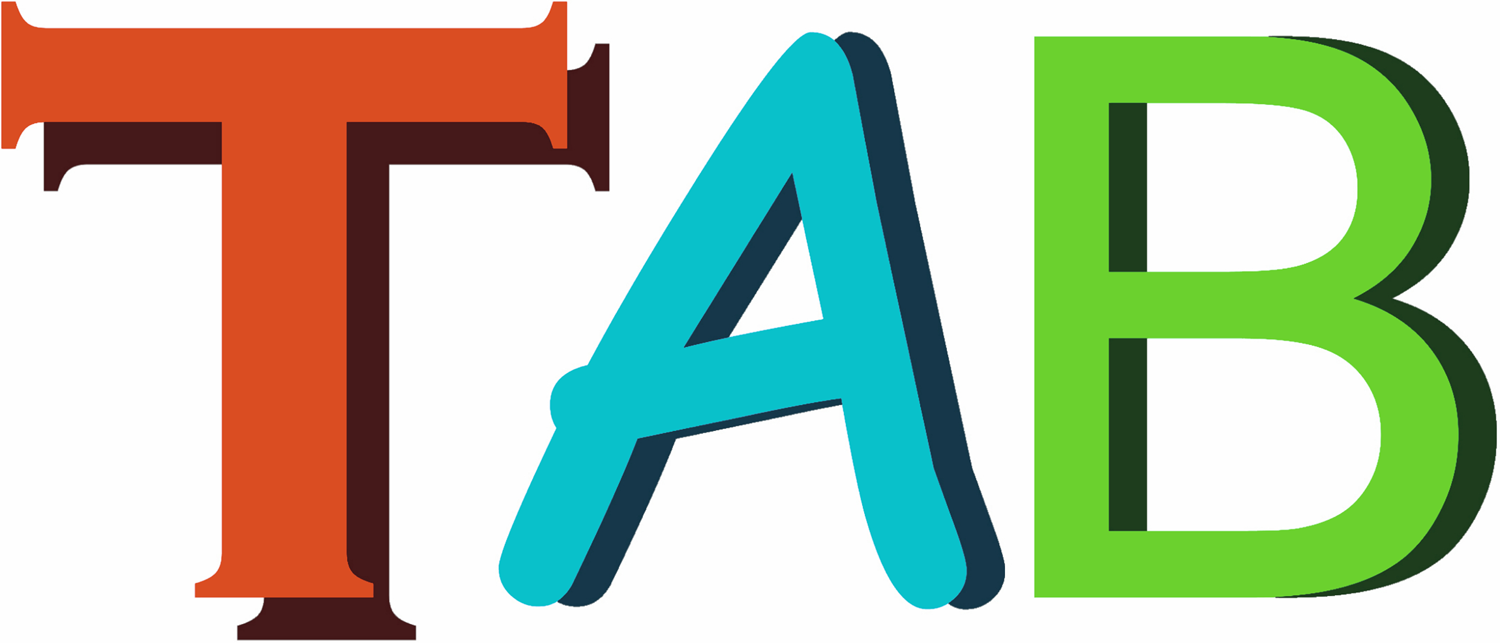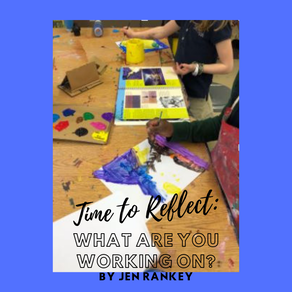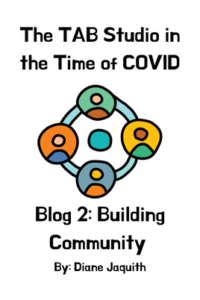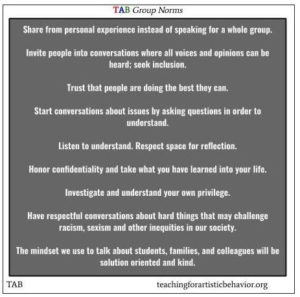Posted on July 2, 2019 by tesartdepartment
Shared with permission from Jen Rankey
What are you working on? I find myself asking this question hundreds of times a week to a wide variety of students and educators. Each time it is asked, there are subtle nuances to the question. When you teach in a TAB art program in a constructivist-based school, this is an incredibly important and sometimes loaded question. The answers are usually as different as each person I ask. When I ask a Kindergartener, “Hey, tell me what you are working on?” I get an answer something like this: “Well, I was watching the construction guy using that big hot glue gun so I used cardboard and marker caps to make one!” Or, “We are having a musical at recess and I am making the tickets!” Kindergarten artists are all-in all the time. I have learned how to simply get out of their way and watch them create without fear.
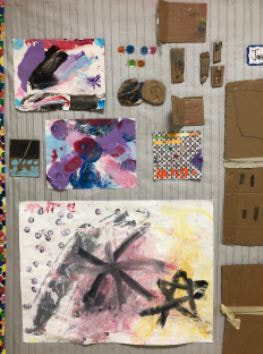
The answers to, “What are you working on?” change as the students get older and their process changes. When I ask a third grader the answer is usually multi-faceted and sometimes hard to follow. For example, a partnership of 3rd grade artists created about 15 different clay pieces as 3-d illustrations for a story they had written in class. When they answer the ‘what are you working on?’ question, they pull together imagination, literacy and clay skills and techniques in a simply magical way that I never could have put together! When I ask the question of another third grader, the answer is “I don’t know but I like how the painting is turning out right now.” This 3rd grader is deep within a painting exploration that has little to do with painting a picture and everything to do with how the paint is mixing, moving and feeling on the brush, the paper and the artists’ hands.

When I ask a 5th grader what they are working on, the answers get even more coded and loaded. Sometimes the question is used to redirect an artist who has completely lost him or herself in the social nature of a working art studio. When the question is answered with, “Oh, sorry….I will get started!” I know it was a gentle reminder to get moving. When it is answered with, “Nothing! I don’t know what to do.” I direct the student to the various resources in the room that could help with idea generation. But that is not it. The ‘nothing’ answer is powerful and presents an opportunity to dig a bit deeper with the artist. ‘Nothing’ can signify fatigue, frustration or lack of confidence but can also tell me that they need something that is currently not present in the art studio, whether that is material, instruction or social intervention. Unlike my kindergarten friends, 5th grade artist have a tough time being all-in and I must recognize and celebrate that part of their artistic development. If not, they will never move past ‘nothing’.
The question becomes essential once the artist moves on to middle school and to get the answer, I become an artistic special investigator. More often than not, the students feel like the question is an accusation. They hear, “Um, you are doing NOTHING and I am sick of you being lazy!” Of course, that is not what I am saying at all but I believe that is what they hear most of the time. So now I have to be more covert and smooth with my questions. My 6th graders are big-time coders and they have created a wide variety of spaces and games. This requires them to spend a lot of time on the computer, which can present as them not doing art (I completely disagree with this). So my questions change to, “Is your co-space ready to share?” Or “Show me how you coded that section.” The artists not coding can be just as offended by the question. So I ask my painters, “How did you get that color?” or “Where did you get that idea?” The illustrators get, “Have you tried using the charcoal for the shadows?” or “Have you tried these markers?” But what I have come to understand and appreciate is that sometimes artists need to do nothing and be stuck and nowhere is this more important than during their artistic development in middle school (in my opinion). It is our job as educators to strike the balance between “nothing” and “something” by helping students find their artistic voice. Students and teachers need to understand that “something” happens when doing “nothing” is embraced, appreciated and allowed.
So, what are you working on this summer? What are your kids working on? How are you helping yourself and your children embrace the delicate balance between doing “nothing” and making something? Stock the house with cardboard, paper, paints, tape, glue, magazines, scissors and give the gift of space and time to create something new!
Share your creative adventures! Looking forward to seeing what happens when school is out 🙂
Thanks,
Jen Rankey
